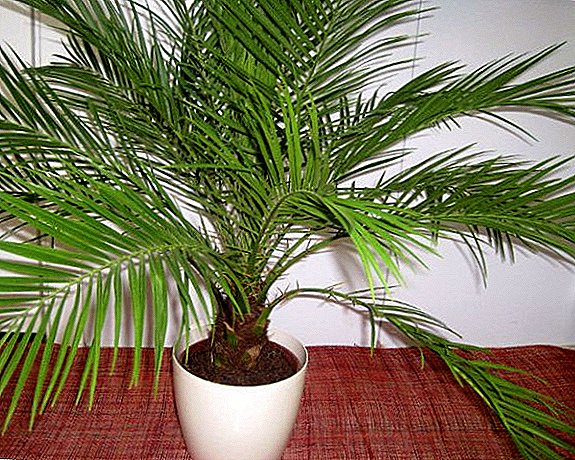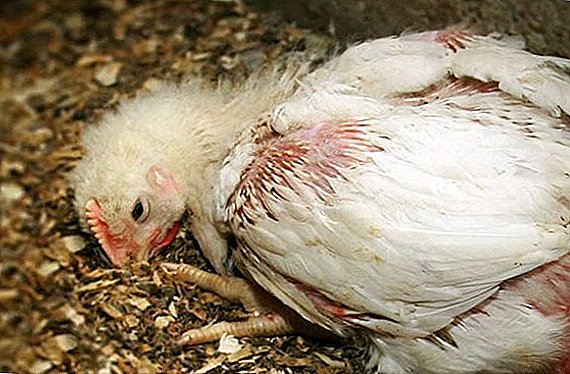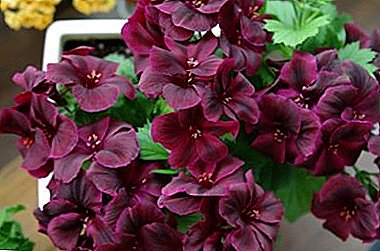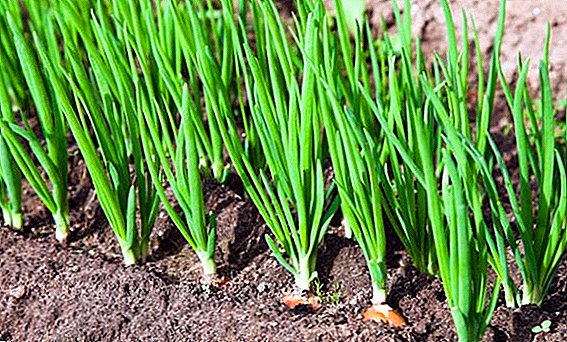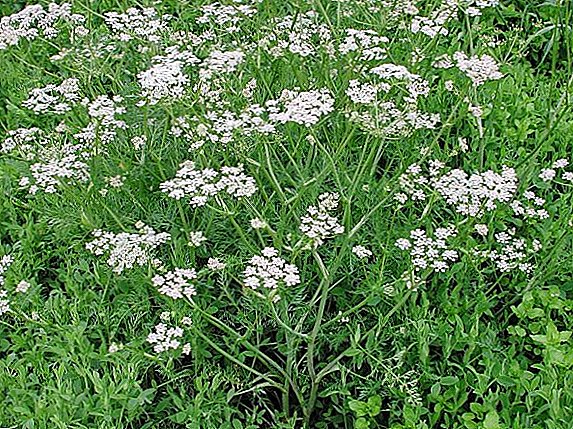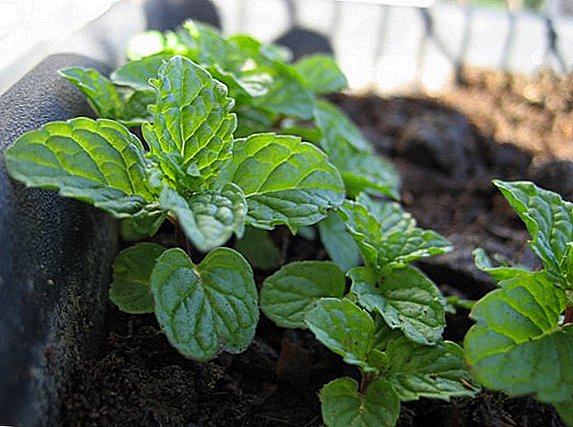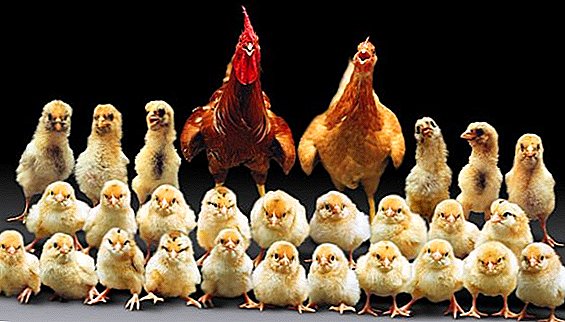 Many of us love and regularly buy sunflower seeds, which today can be found in any store. But why waste money if sowing sunflower seeds is possible at any dacha? This is really a simple procedure, and for its implementation it is not necessary to have any special skills, enough general knowledge.
Many of us love and regularly buy sunflower seeds, which today can be found in any store. But why waste money if sowing sunflower seeds is possible at any dacha? This is really a simple procedure, and for its implementation it is not necessary to have any special skills, enough general knowledge.
Botanical description of sunflower
The first reports of such a cultivated plant as a sunflower appeared around 3000 BC. Archaeological excavations prove that this plant was domesticated by North American Indians, even before wheat. At first, it was believed that its origin was connected with two different places at once, but over time, genetics came to the general conclusion that the eastern part of the United States, namely the Mississippi River valley, is still the birthplace of cultured sunflower.
 This annual (less often perennial) plant reaches a height of 2-4 meters and has a well-developed taproot with lawsuit roots (they can penetrate into the soil to a depth of 2-3 m).
This annual (less often perennial) plant reaches a height of 2-4 meters and has a well-developed taproot with lawsuit roots (they can penetrate into the soil to a depth of 2-3 m).
The coarse stem is covered with stiff hairs, and inside it there is a spongy core. Sunflower leaves, located on long petioles, differ jagged edges and densely pubescent leaf hairs.
At the end of the stems are inflorescences (presented in the form of baskets), whose diameter reaches 15-45 cm. Numerous flowers are located on the receptacle in circles. Looking at the sunflower during the flowering period, it is not necessary to guess for a long time whether it is a flowering plant or not, because the bright yellow flowers are visible far beyond the garden.
Sunflower is a typical cross-pollinated plants, the process of pollination which occurs with the help of insects. The fruit is presented in the form of achenes with a fruit coat of a woody type. Inside the seed, there is a nucleus, fused with a shell (on top of it is covered with epidermis and painted in white, black, gray, brown, black and purple and other colors).
Sunflower is equally resistant to both a decrease in temperature and drought, and the seeds begin to germinate already at a temperature of + 3-4 ° C. Young shoots tolerate frosts up to -5 ° C, but at the final stage of vegetation, frosts down to -3 ° C can destroy the plant. The optimum temperature for normal growth and development of sunflower is + 20-30 ° C, which is also a feature of this culture. If the temperature indicators exceed + 30 ° C, the plant will not be able to please you with a healthy and luxurious look.  Some gardeners are interested in which family the sunflower belongs to, although its belonging to the asteraceae is unlikely to significantly help in cultivation. To achieve maximum yield, you need to know about all the features and intricacies of planting and caring for the specified culture.
Some gardeners are interested in which family the sunflower belongs to, although its belonging to the asteraceae is unlikely to significantly help in cultivation. To achieve maximum yield, you need to know about all the features and intricacies of planting and caring for the specified culture.
Features of growing sunflower, where sunflowers grow best
Sunflower seeds are sown in the ground as soon as it warms up to + 13-16 ° C, choosing for this place that will best meet all the requirements of the culture. In this matter, an important role is played by good lighting, protection from strong winds and the composition of the soil, which will be discussed further.
The choice of lighting for growing sunflower
 A sunflower is a very sun-loving plant (as its name implies), but at the same time it does not tolerate strong wind. Therefore, choosing a place for planting, it is better to look at the northern part of your garden. It is also recommended to sow the seeds of a plant under a fence, a house or sturdy trees, where they will not obstruct other plants, but at the same time will be able to enjoy the sun's rays most of the day.
A sunflower is a very sun-loving plant (as its name implies), but at the same time it does not tolerate strong wind. Therefore, choosing a place for planting, it is better to look at the northern part of your garden. It is also recommended to sow the seeds of a plant under a fence, a house or sturdy trees, where they will not obstruct other plants, but at the same time will be able to enjoy the sun's rays most of the day.
Did you know? A sunflower has one very remarkable feature: its head, stem and leaves are turned to the sun all day long. A similar phenomenon has been called helionation, but after the end of the flowering period, this ability is lost.
Soil for sunflower
The sunflower also makes its demands on the composition of the soil in which it is sown. So, in order to harvest a good harvest, you will need fertile soil, the role of which is perfectly suitable for the land with an average amount of clay in the root system of the plant and sufficient moisture under it. It is better not to plant sunflower on acidic, swampy and too salty soil. You should not plant this crop in areas where legumes (peas, soybeans or beans), tomatoes or sugar beet were previously grown, but the soil after grain crops and maize will fit just perfectly.
Do not plant sunflowers for several years at the same place, as this plant in one year sucks the maximum amount of all the necessary minerals out of the ground, which means that next year other sown sunflowers will not receive them. The optimal period of a break is 3-4 years. In addition, such a "respite" will get rid of most of the diseases of the sunflower, the pathogens of which are well preserved in the ground all winter.
 A good drainage of the soil should also be organized in the selected area, because even though sunflowers are fairly resistant plants, the only thing that can harm them is flooded soil. If necessary, you can quickly build a simple or raised garden tub, made of cedar four-meter boards.
A good drainage of the soil should also be organized in the selected area, because even though sunflowers are fairly resistant plants, the only thing that can harm them is flooded soil. If necessary, you can quickly build a simple or raised garden tub, made of cedar four-meter boards.
Important! Compared to other types of wood, cedar planks are more preferable, since they do not rot when in contact with water.
Rules for planting sunflower in the garden
In addition to choosing a suitable place for growing sunflower, an equally important role in the success of the business is played by proper preparation and planting of seeds in the ground. Surely each gardener uses his own unique methods in performing this procedure, but we will tell you about the most common.
Seed preparation for planting
In any place where sunflower is grown, its seeds are pre-pickled and calibrated. In order to pickle the seed well, you will need an effective folk remedy that, with almost a 100% guarantee, will get rid of harmful microorganisms.

To make it, take onion peel and garlic (about 100 g), then skip the latter through a meat grinder and mix the resulting gruel with another ingredient. The mixture must be poured over two liters of boiling water and left to infuse for 24 hours. After this time, the infusion is filtered through cheesecloth and sunflower seeds are placed in it, leaving it overnight. The next day, the treated seeds can be planted in the ground.
Such processing of seed material before planting at first will scare off rodents and other pests that are not averse to eat seeds.
Some gardeners do not trust the people's means, relying more on the achievements of modern science. But how to process sunflower seeds before sowing in this case? The most suitable option are fungicides, and the most popular drugs include "Maxim KS" and "Apron Gold", which perfectly protect the seeds from many diseases (additional treatment may be needed only if an invasion of insects is expected). In the case of soil contamination by pests, insecticides, such as Kruiser and Force SC, are ideal for treating seed.
Sowing planting material
In addition to the proper preparation of seeds for planting, you need to understand how best to sow sunflower. First of all, it should be noted that the plant described prefers untamped and light earthand, therefore, pretreatment of soil under a sunflower will require its loosening with a spatula or hands.
After completing this process, it is necessary to dig holes a few centimeters deep, keeping a distance of 10-45 cm between them (the exact figures depend on the type of sunflower). You can make a hole in the ground with your hands, but it is better to use a small spatula for this purpose.  In the case when the plants are planted in a row, the distance between them should not be less than 30 cm, because for a good and fast growth of sunflowers they need a lot of space.
In the case when the plants are planted in a row, the distance between them should not be less than 30 cm, because for a good and fast growth of sunflowers they need a lot of space.
Important! When planting large plants, you should leave about 45 cm between the seeds, 30 cm will be enough for medium sunflowers.In each hole laid out a few seeds, after which they are covered with earth. You can also sow seeds with a difference of several weeks, which will allow you to get a crop at different times of summer. Since sunflowers are annual plants and only bloom once a year, this way you can extend this time.
After planting seeds in the ground it is useful to add a small layer of fertilizer. For this, organic matter is well suited, which is simply scattered throughout the site. Also, it will be useful and a layer of mulch, which will help keep the land drained and save it from water logging.
After fertilizer application and mulching of the soil, all that remains is to thoroughly water all of the water and make sure that the seeds are still not submerged.
Features of sunflower care in the garden
When the technology of preparing seeds and sowing sunflower is already clear, we can talk about further care of the plant. Of course, the most important points to pay attention to are watering, fertilizing and tillage during the entire process of plant growth and development.
Watering
 Sunflower must be watered every day, taking into account the fact that its root system is highly developed and absorbs a large amount of moisture. Typically, these plants are watered once a day, but in the dry season, the number of daily irrigations is increased to two or three times. If the air temperature exceeds + 30 ° C, then the plants are watered as the topsoil dries. At the same time, water stagnation is unacceptable.
Sunflower must be watered every day, taking into account the fact that its root system is highly developed and absorbs a large amount of moisture. Typically, these plants are watered once a day, but in the dry season, the number of daily irrigations is increased to two or three times. If the air temperature exceeds + 30 ° C, then the plants are watered as the topsoil dries. At the same time, water stagnation is unacceptable.
Regular and sufficient watering in the care of sunflower crops will contribute to their abundant flowering in the middle of summer.
Fertilizer
As for fertilizing plants, the sunflower is more suitable fertilizers, which contain phosphorus and potassium. It is undesirable to feed the seedlings with manure, as in organics there is a lot of nitrogen. This chemical element does not like both the sunflowers themselves and the bees pollinating the flowers. Insects react much better to potassium-phosphate compounds, and the better the plants are pollinated, the more chances you have to get a bountiful harvest. The first fertilizer for sunflower is applied when sowing, and the rest is done after watering or weeding the seedlings.
Did you know? To collect one ton of crop, the plant will need about 60 kg of nitrogen, 27 kg of phosphorus and 150 kg of potassium.
It is important to understand that the seed application of fertilizers in the cultivation of sunflower plays a very important role and affects its further growth.
 Complete fertilizers (nitroammofosku) in the ratio of 1 kg / ha of physical mass are often used as necessary fertilizers. Nevertheless, fertilizers cannot be applied directly to the wells or to the beds, since even their small doses can reduce seed germination (it is better to just scatter the rows from the side). Before sowing sunflower, a small dose of ammophos or superphosphate (1 kg / ha of active ingredient) can be applied to the soil.
Complete fertilizers (nitroammofosku) in the ratio of 1 kg / ha of physical mass are often used as necessary fertilizers. Nevertheless, fertilizers cannot be applied directly to the wells or to the beds, since even their small doses can reduce seed germination (it is better to just scatter the rows from the side). Before sowing sunflower, a small dose of ammophos or superphosphate (1 kg / ha of active ingredient) can be applied to the soil.
Tillage
The most important is the treatment of the soil before sowing sunflower. Since the plant grows better in loose soil, the soil must be properly prepared after the predecessors. The choice of methods of cultivation depends on its type, the ratio of crops in crop rotation, weather conditions and the climate of the region, as well as the prevailing form of organic fertilizers. Considering these factors, both conventional soil treatment with a plow and preservative treatment without a plow, but with loosening, can be performed.
Creating an optimal soil structure for sunflower sowing begins in the fall and provides for thorough processing of the stubble of its predecessor. All that remains after harvesting the previous harvest (straw and stubble), must be well crushed and embedded in the ground to a depth of 5-10 cm, which will provide all the conditions for the decomposition of these residues before the beginning of winter.
After sowing the crop in spring, the bed with sunflowers should be weeded regularly, saving them from heavy weedy neighborhoods. Hilling of these plants is not required.
Major diseases and pests of sunflower
When growing sunflower you will probably have to face such unpleasant phenomena as pests and plant diseases. Despite the fact that sunflowers do not belong to the favorite cultures of pests, the gray moth often enough lays eggs on them. To get rid of this trouble, it is enough to remove small worms from the plant.
A cottonworm is also dangerous for a sunflower, which, feeding on its juice, not only inhibits the growth and development of culture, but also makes it vulnerable to a number of diseases. Also, do not forget about the possibility of attacking plants with sunflower moth, laying eggs directly into the baskets of the plant. The caterpillars that emerged from them are taken to eat parts of the flowers and, gnawing through the seed coat, eat them away from the inside.
Among the most common diseases of sunflower need to select white and gray rot.  In the first case, rapidly spreading dark-colored wet spots appear on the inside of the baskets, and in the second case brown areas covered with grayish bloom appear on the plant. It is also impossible to ignore fomopsis - a disease in which dark or grayish spots with a light border appear on the lower leaves and false powdery mildew (there are well-marked spores of the fungus-causing agent on the lower side of the leaf, while greenish tints appear on the upper side ).
In the first case, rapidly spreading dark-colored wet spots appear on the inside of the baskets, and in the second case brown areas covered with grayish bloom appear on the plant. It is also impossible to ignore fomopsis - a disease in which dark or grayish spots with a light border appear on the lower leaves and false powdery mildew (there are well-marked spores of the fungus-causing agent on the lower side of the leaf, while greenish tints appear on the upper side ).
Get rid of all these problems will help antifungal and other special drugs, to find that today is not a problem.
Important! The active development of harmful microorganisms occurs at high soil moisture and warm weather, and insect pests spread when crop remains remain in the fields after harvesting. Therefore, it is important to follow the rules of pre-sowing tillage and crop care.
Sunflower: harvest
Among all the work on the cultivation of sunflower, the collection of its seeds is the most difficult and time-consuming process, because no matter how simple this crop may seem, a significant part of the seeds can simply crumble.
Harvesting begins when all crops are no more than 12-15% sunflowers with yellow or yellow-brown baskets, while the rest are brown and dried. Plant cleaning should be fully completed 6-7 days before the seeds reach 7-8% moisture.  Dried and darkened seeds are cut together with the head with a sharp knife. To dry the sunflower, it is cut into two parts and suspended in a dry, well-ventilated room, after which you can choose seeds from baskets. To make the seeds even tastier, just put them overnight in salt water, then dry and fry in a stove at a low temperature. Also, after removing the seeds from the baskets, you can further dry them, spreading them out in one layer and leaving them in storage for 8-10 days (their humidity should not exceed 10%). Store seeds should be in a cool and dry place, otherwise they will begin to taste bitter.
Dried and darkened seeds are cut together with the head with a sharp knife. To dry the sunflower, it is cut into two parts and suspended in a dry, well-ventilated room, after which you can choose seeds from baskets. To make the seeds even tastier, just put them overnight in salt water, then dry and fry in a stove at a low temperature. Also, after removing the seeds from the baskets, you can further dry them, spreading them out in one layer and leaving them in storage for 8-10 days (their humidity should not exceed 10%). Store seeds should be in a cool and dry place, otherwise they will begin to taste bitter.
In general, a sunflower is an easy-to-grow crop, and given the description of its appearance, such a “flower of the sun” will not only please you with tasty seeds, but also decorate the garden.



